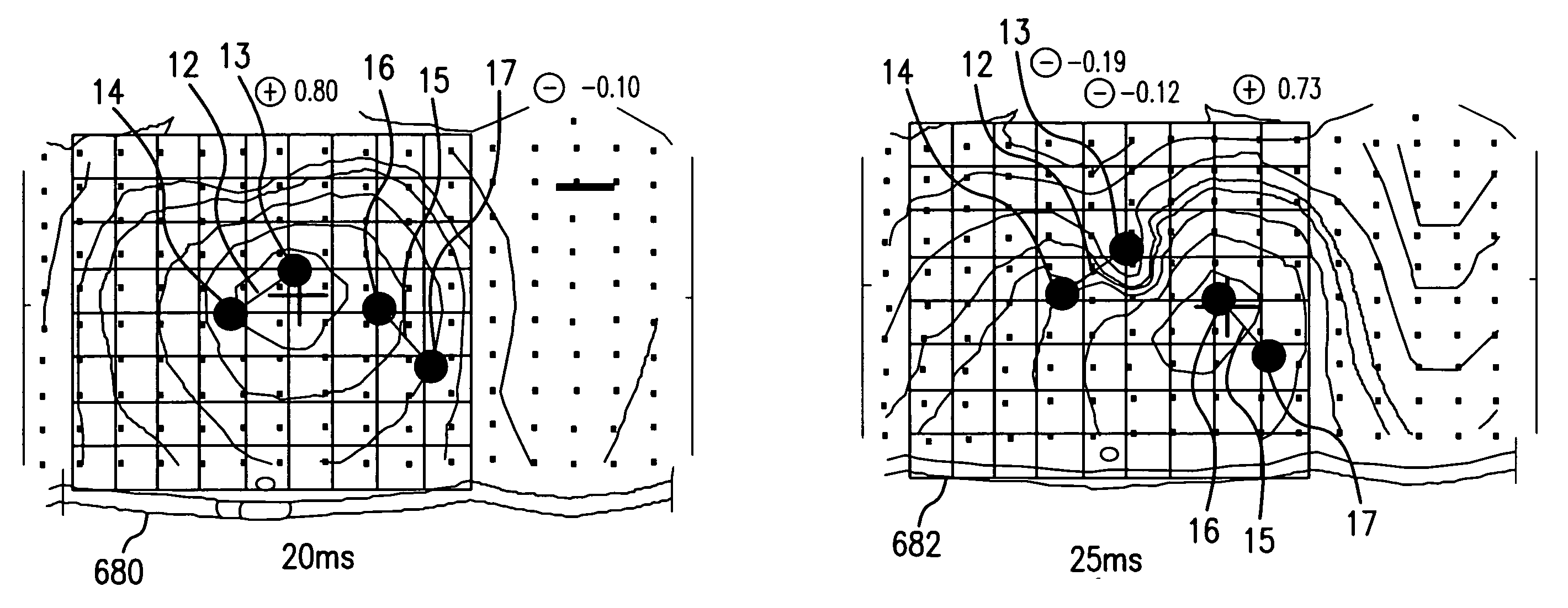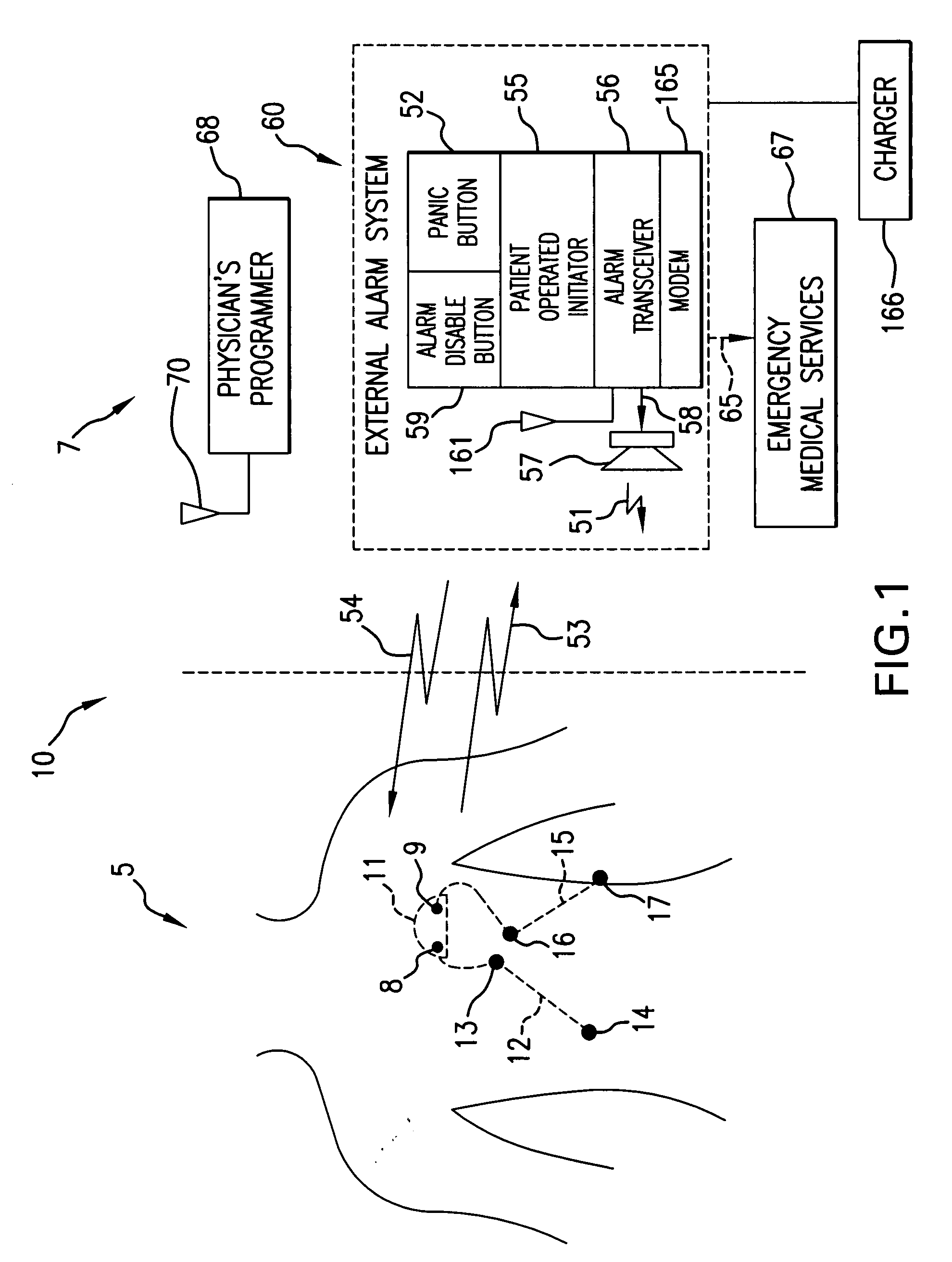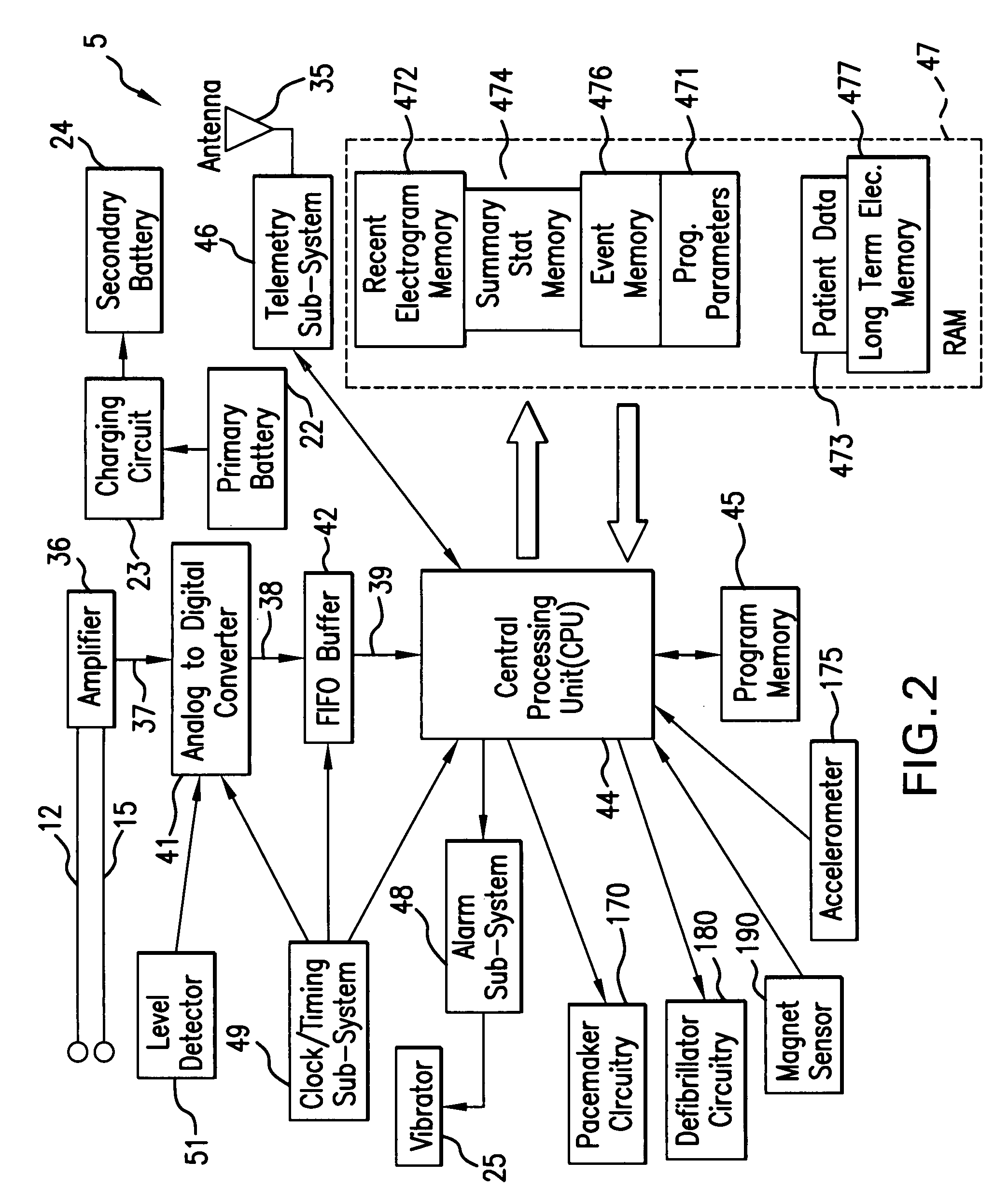System and methods for detecting ischemia with a limited extracardiac lead set
a technology of extracardiac lead set and ischemia, which is applied in the field of medical device systems, can solve the problems of inconvenient patient monitoring with wearable sensors, and increased risk of ami in coronary atherosclerosis
- Summary
- Abstract
- Description
- Claims
- Application Information
AI Technical Summary
Benefits of technology
Problems solved by technology
Method used
Image
Examples
Embodiment Construction
[0042]“Lead” means at least two sensors that are configured to detect the electrical potential between two points.
[0043]“Primary deflection” means that portion of the QRS complex characterized by the largest amplitude peak to peak potential change. For example, in the context of a normal QRS complex recorded by precordial lead V3, the primary deflection is that part of the QRS that connects the peak of the R wave to the peak of the final deflection.
[0044]“Initial deflection” means that portion of the QRS complex before the primary deflection.
[0045]“Final deflection” means that portion of the QRS complex after the primary deflection.”
[0046]An “ischemia test” applied to a waveform feature value is a one or more mathematical operations performed on the waveform feature value and test parameter value(s). For example, if a waveform feature value is ST shift (x), an “ischemia test” is (x>0.1 mV), which is true when the ST shift is greater than 0.1 mV and otherwise false. Continuing with t...
PUM
 Login to View More
Login to View More Abstract
Description
Claims
Application Information
 Login to View More
Login to View More - R&D
- Intellectual Property
- Life Sciences
- Materials
- Tech Scout
- Unparalleled Data Quality
- Higher Quality Content
- 60% Fewer Hallucinations
Browse by: Latest US Patents, China's latest patents, Technical Efficacy Thesaurus, Application Domain, Technology Topic, Popular Technical Reports.
© 2025 PatSnap. All rights reserved.Legal|Privacy policy|Modern Slavery Act Transparency Statement|Sitemap|About US| Contact US: help@patsnap.com



